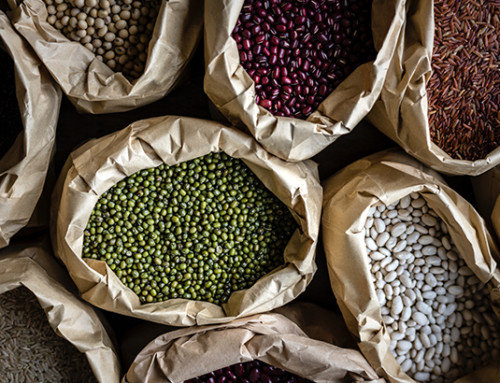On the verge of Valentine’s Day, we couldn’t resist doing a sweet science experiment, so today, we’re going to test glucose levels in honey! Feel free to lick the spoon.
Background
Let’s take a closer look at honey, so we can hypothesize about what we might expect to happen in this experiment. Raw honey starts out as flower nectar. When bees collect the nectar, it naturally breaks down into simple sugars. Bees store it in honeycombs, which causes the nectar to evaporate. This results in the thick, sweet liquid we know as honey.
Most of the honey we see in grocery stores is processed, meaning it was heated and filtered after it was gathered from the beehive. The process of heating honey to high temperatures to kill any yeast that me be present, which prevents fermentation, is known as pasteurization. Unfortunately, this high heat also kills most of the enzymes and some vitamins in honey, so pasteurized honey doesn’t have as many health benefits as raw honey. Raw honey contains amylase, vitamins A, C, D, E and high concentrations of the B-complex vitamins including thiamin, riboflavin, niacin, and pantothenic acid to name a few.
Raw honey is often recommended as good substitute for sugar because it’s sweet but still has several health benefits. So, we are curious…just how much sugar is in honey? And is the glucose content different if the honey is processed or raw? To give us an idea, we’re going to test the glucose levels of different types of honey.
Materials
- Glucose test strips
- 3 or more different types/brands of honey
- Distilled water
- Measuring cup or beaker
- Plastic cups or containers
Instructions
- You’ll need a container for each type of honey that you have. Mark each one with the name of the honey you’ll be pouring in.
- Since honey is thick and hard to test directly with a test strip, you’ll need to dilute it with distilled water first. When diluting, it’s important to measure the amount of dilution carefully, as this will factor into reading the test results.
- For example, mixing 2.5mL (0.5 tsp) of honey with 22.5mL (4.5 tsp) of water makes a 1-to-10 dilution. When reading the color chart, multiply the concentration of glucose in the diluted solution by 10 to obtain the concentration of glucose in the original sample.
- Measure and dilute each type of honey into its respective container, making note of the dilution factor.
- You’ll need one glucose test strip for each type of honey you have. Using a test strip, test the first container of honey by dipping the strip into the liquid for a couple of seconds. As you remove the strip, run it along the edge of the container to remove the excess honey. Wait 3 minutes, then compare the strip to the color chart on the bag. Then, remember to multiply the result by your dilution factor. Follow the same procedure for each type of honey.
Were the results as you expected? Which type of honey had the highest glucose content? Was there a big difference between raw and processed honey? Were you surprised by the amount of glucose in the honey?







Leave A Comment